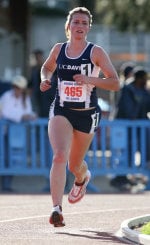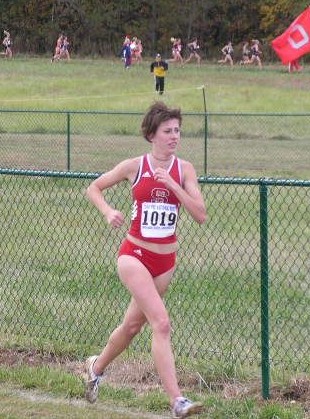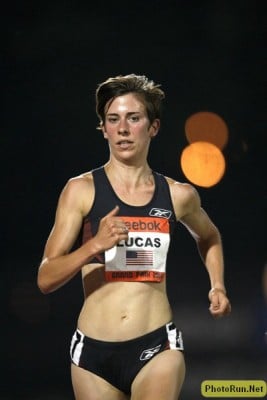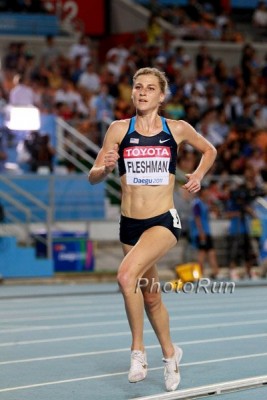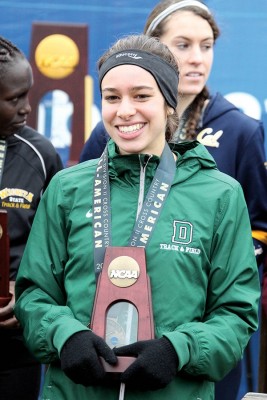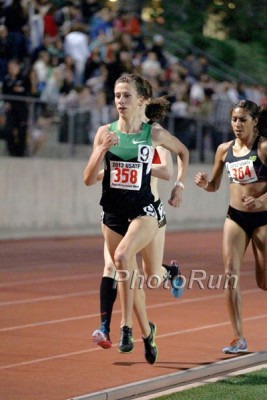An Oral History Of The 2012 Olympic Trials Women’s 5,000, Part I: The Road To The Trials
By Jonathan Gault
June 27, 2016
No meet captures the imagination of American track & field fans like the US Olympic Trials. And at the 2012 US Olympic Trials, no distance race was more dramatic than the women’s 5,000 final (LRC The Women’s 5,000 Final – The Olympic Trials At Its Absolute Best: The Battle For Third Is One That Will Not Be Forgotten).
It had everything: absolute elation and devastation; an unlikely victor upsetting one of America’s greats; a bold late-race move; a young star breaking onto the national scene for the first time; an epic three-way sprint for the final Olympic spot; and redemption stories galore. It was everything that is great about our sport, years of pain and sacrifice distilled into pure joy for the three Olympians and utter disappointment for the woman who came four-hundredths of a second short of her Olympic dream.
But this was more than a race. The fans saw 15 minutes of racing on the track, the victory laps and the post-race interviews. They didn’t witness the obstacles these athletes had to overcome to even make it to the starting line. Nor did they see what unfolded in the days, months and years after, the struggle to return to normal following the highest high or lowest low of an athlete’s career.
With the 2016 Olympic Trials set to start on Friday, we revisit the story, as told by the women who made it. Part I below gives the backstories of the main players and recounts their roads to the Trials. Part II (coming Tuesday) deals with the race itself. Part III (coming Wednesday) deals with the lasting effects the race had on the women who ran it. Portions of the following interviews have been condensed for clarity.
***
Every road to the Olympic Trials is a different length. For some athletes, the Trials are something they’ve focused on for their entire competitive lives. For others, they’re a far-off dream that suddenly becomes a serious reality thanks to a breakout performance. But almost all roads to the Olympic Trials are winding; rare indeed is the athlete who makes consistent forward progress four straight years without getting injured. For Julie Culley (1st), Kim Conley (3rd) and Julia Lucas (4th) the story of their race at the 2012 Trials began many years earlier.
Julie Culley: I made cross country nationals twice while I was in college [at Rutgers] and I made the indoor national championship one time. But most of my collegiate career was kind of plagued by injuries. I kind of followed this pattern where I was on a season, off a season. You can probably name almost any injury that you could have in college and I had it…I enjoyed my running career a lot in college [but] it was definitely a lot that was left on the table…I was pretty burned out from the cycle of injuries.
Culley graduated in 2004 and was set to move to Denver in 2005 to take a job with AmeriCorps. But Culley had always had a passion for coaching and her coach informed her that Loyola University Maryland was looking for a new coach.
Culley: I said, “Well there’s no way they’re going to hire a 22-year-old head coach but I’ll take the interview for the experience of it.” And I went down to Baltimore and I interviewed and they offered me the job.
[Once I took the job], if you talked to me then you probably knew I had stopped running. I was trying to get a little bit of running in but it was mostly just for fitness, not to gain weight.
But the sport wasn’t done with Culley yet.
Culley: That spark came back naturally just being surrounded by it all the time. I think, had life taken me out to Denver and this AmeriCorps process, I’m not exactly sure if I would have come back to running.
I can remember a very specific day that I was standing on the indoor track with the team and they were about ready to race and I just had this epiphany that I didn’t want to do this (coach) anymore, I didn’t want to be the one holding the watch. So in 2006, I resigned and went in pursuit of my own running.
First, Culley needed a coach.
Culley: I remember that (two-thirds of a year earlier in the) fall of 2005, we were out on a cross country course out at Mount St. Mary’s in western Maryland. And I was running all over the place trying to get splits for my team and [American University coach Matt Centrowitz] stopped me and said, “Who are you?” I was like, “‘Excuse me?” He’s like, “Who are you?” I was like, “I’m Julie Culley.” He’s like, “Why do I know that name?” And I was like, “I ran for Rutgers, you recruited me out of high school.” And he said, “I remember that you ran for Rutgers. What are you doing?” I said, “Well, I’m coaching.” He said, “Why?” I said, “Well, I really enjoy it.” He said, “No, no, no, you’re too young to coach, you need to run. You should be running.” I was like, “Well, you know it didn’t really work out that well for me. I was having a tough time with it.” He said, “If you ever want to get back into running, you should call me.”
So that kind of stuck in the back of my mind. I contacted Coach Centrowitz [in 2006] and it was fairly upsetting — he gave me a list of people he thought might be interested in coaching me and he wasn’t one of them. It was kind of a deceiving moment.
I called that list of people and emailed [them] and no one got back to me. It was June of 2006 and I called him again and I said, “Coach I really want you to coach me.” And it was this very quick conversation and he said, “Why don’t you call me when you get in shape?” He told me to call him at the end of November. [I had to] figure out how to get in some semblance of shape during that time.
I had to go back to square one. I went to the athletic director at Loyola, I told him about my situation and he created an assistant coaching job. I kind of trained alongside the Loyola team for a couple months and got myself in shape. [In November], I drove down to D.C. and basically cried until [Centrowitz] agreed to coach me…He either didn’t really want to deal with me or he was really trying to see how serious I was about it.
For a year, Culley commuted from Baltimore to D.C. three times a week to work out with Centrowitz, dropping her PRs from 4:37 and 16:29 to 4:17 and 16:00. In July 2007, she moved to D.C., where she worked at CustomInk and later took a job at a running store. Yet despite making the World Indoor team in 2008 and the World XC and World Outdoor teams in 2009, Culley remained unsponsored until 2010, at which point she felt it was time for a change.
Culley: Coach Centrowitz and I, I think there was just a point where we hit a head with each other. It was hard. Coach Centrowitz was ultimately a college coach and I had reached a point where I needed a professional schedule. It was kind of a mutual thing between the two of us.
Culley heard that legendary coach Frank Gagliano was returning to the East Coast because his daughter-in-law was sick. For Culley, a New Jersey native, it represented an opportunity to go home. Gagliano agreed to coach her.
Culley: We had a lot of conversations. He had this vision of this “United Nations of shoe companies” having all these different athletes and that was really his dream. And there were a couple of us that had joined the group by then that really wanted to see that through. I kind of told Gags that I would do some of that business-end stuff for him [as] that wasn’t really something he was interested in. It was fun because we were that group that pulled that together and helped him create that vision.
The New Jersey*New York track club was formed.
Culley: There were enough of us in New Jersey that decided that we were so sick and tired of everything being called New York-New Jersey, New York-New Jersey. So we were like no, this club was established in New Jersey, we’re founding it in New Jersey, we’re practicing in New Jersey, we’re living in New Jersey. But Gags was living in New York so we had to pay homage to him too. So we just flipped it around, which made it very difficult for people because they were so used to saying New York-New Jersey that we had to constantly correct [them].
Like Culley, Kim Conley hadn’t achieved all that she wanted during her collegiate career. Despite zero interest from sponsors, Conley decided to keep running.
Kim Conley: I went to UC Davis and we were transitioning from Division II to Division I at that time. We weren’t eligible for any postseason competition until my fourth year (2007-08). At that time, I had what it took to get [to NCAAs]. I was in a position where I could have made it, probably, if things had gone right for me at the regional meet but I ended up getting food poisoning the night before my race, didn’t toe the line. Then my 5th year I was dealing with a little bit of an injury and my shoe came off 600 meters into the regional meet so I ended up DNFing that meet and never going to NCAAs [on the track].
During Conley’s fifth year, UC Davis got a new coach, Drew Wartenburg. He allowed Conley to stay on as a volunteer assistant after she graduated in 2009 and agreed to continue coaching her.
Conley: A lot of it was because of the fact that I hadn’t made it to NCAAs in track. I had those two unfortunate events on the track and just felt like I had a lot of unfinished business, really. I just knew I wasn’t ready to be done running at a high level and knew I had a lot of unfinished business.
The first year, my parents were supporting me basically. The second year, I became a paid assistant coach at UC Davis. [It was] definitely a gradual progression, just kind of steady progress. It seemed like every year, I would take a decent chunk of time off my PR in the 5,000.
By the end of 2011, Conley (who remained unsponsored) had gone from college PRs of 4:22/16:17 to 4:12/15:38. It was time to go all-in.
Conley: I had made enough on the roads [that] I had saved up a little bit. I decided I wanted to step back from the coaching and treat myself like a full-time professional runner going into Olympic Trials. I felt pretty strongly that the women I would be competing against all had that advantage, that they were kind of living and breathing training and racing. And so I wanted to give myself that opportunity. So I stepped back from coaching in January in 2012 so that I would have six months to be a full-time professional runner and feel like I was toeing the line at the Olympic Trials on an even playing field.
Julia Lucas put together a solid collegiate career at NC State, finishing 8th in the 5,000 at NCAAs in as a sophomore and 4th as a senior in 2007. But she was never fully healthy.
Julia Lucas: [In June 2004], I was caught in a house fire. I was burned quite badly. Most of the skin on my lower legs was gone, my hair, eyelashes were gone, [the hair on] my wrists. And burns are hard to recover from. All of that just takes a really long time, you have to grow new tissue. Once the tissue is rebuilt, it’s not the same as it was before. I had to go through a process of stretching out the new skin on my ankles to be as flexible as it’s supposed to be.
From the time of the fire, summer 2004, until I graduated (in 2007), injuries largely defined my seasons, managing [them] and eventually falling into the injury trap. So after those three years, I was really banged up and was just trying to basically survive the season. I signed with Reebok initially but did not go to Europe with all of my other competitors. I stayed back and went to Philadelphia to talk to a doctor that was sort of a famed surgeon of the time with an injury du jour that everyone was having and getting surgery for called a sports hernia, which doctors have since decided is not really a real thing, sort of an excuse to get an easy quick-fix surgery. Adam Goucher had it, Carrie Tollefson had the same surgery with the same guy and I returned from that surgery, kind of a long return, not really better. I still couldn’t run.
It was frustrating. I didn’t know what I was going to do. I certainly couldn’t go join a group [being injured], especially [not being] a prize recruit out of college. So I basically strung together every connection I had and eventually wound up in a camp. It was actually a giant warehouse, I think they used to keep boats in it, in Stockton, California, with the genius Dan Pfaff. He’s a coach to some, but he’d be better defined as a diagnostician. He is very good at figuring out what’s wrong with you.
Lucas’s left femur had twisted out of its socket and as a result she was running with a pointed-out toe and dragging her leg along behind it. Day after day, Pfaff would watch Lucas try to run and make slight adjustments to her form. After a month, Lucas was back running again, and with better form.
Lucas: He is a genius. Everybody who does physio knows who Dan is. My career would not have happened without a genius along for the ride like him. His role was getting me back together but he turned me into a better athlete than I was before.
(Editor’s note: In addition to being able to diagnose injuries, Pfaff is a very accomplished coach having guided the likes of Donovan Bailey to 100m gold in 1996 and Greg Rutherford to long jump gold in 2012).
At that point in time in 2007, there was not the plethora of groups that there were now, especially top-tier groups. The best group in the country, by far, in that moment was Mammoth Lakes, California, which is where Deena [Kastor] and Meb [Keflezighi] and Ryan Hall and Ian Dobson and all these incredible athletes [trained]. I wanted to go there and I called coach Terrence Mahon and he basically said, “Who do you think you’re kidding?” But then Dan Pfaff was so respected and we got along really well that he put in a word for me and got me a position on the team.
Though Lucas knocked almost 20 seconds off her 5,000 pb (down to 15:33) under Mahon, Mammoth Lakes was not for her.
Lucas: [The program] included a lot more science than I was used to. Things like VO2 max and threshold testing, which everybody knows, but also a lot of supplements. And all like totally standard, like “This is for multivitamin, this is for multimineral.” Things like the altitude tents and sleeping in a hyperbaric chamber and a hyperoxic treadmill system where you’re at altitude but you’re wearing a facemask to give you extra oxygen.
It was just a lot of science. I fancied myself a blue-collar type. I come from a solid working-class family. I always wanted to be Rocky rather [than] the Russians. So even though I was immediately successful there, I was just sad. After two and a half years, my contract ran out and I stopped running and I figured, “Well, I guess I don’t like professional running, I only like collegiate-style. Maybe I only have the guts and heart side of it and the technical side single-minded focus that’s required to get to the very top of the world, maybe I don’t have that in me.”
One incident in particular caused Lucas to question her dedication.
Lucas: I didn’t get along with Terrence as a coach. We were just both too fiery as personalities. He’s a great coach but we just weren’t it for each other.
It was after a particularly bad tempo run on Green Church Road. I was just getting more and more frustrated, [thinking] “I don’t understand what I’m doing here. Deena’s up in the distance, I’ll never be like her. I don’t know why I’m doing this.”
[Terrence] just threw my sweatpants out of the van and drove off and said, “Cool down.” So when we got home that day, he was in the van, he dropped me off at my house and told everybody else to get out of the van and just yelled at me like, “If your fight is gone, you’re done. There’s nothing left for you. That’s what you have.”
I have cried twice in this sport. Once when I was 18 when I ran really badly at my first junior World Championships in Switzerland, and then. And it was because it was totally true. You can be such a good runner and fail at this sport. You have to be at the top or you’re nothing. There’s so little room. It’s not like a bigger budget sport. And without that fight…
I didn’t run for a year, which was also helped along by getting a stress fracture. I decided to take on the real world, writing articles, freelance editing. But I couldn’t give it up. I wasn’t running at all but I would think about it all the time. Everything I wanted to do was around running. I think I knew I wasn’t going to go away.
I got married to (2008 US Olympian at 5000) Ian Dobson in the end of 2008 and he was still running and he had made the Olympic team in grand fashion. We left Mammoth Lakes together. He was attracted to the Oregon Track Club in Eugene largely because he was pursued by his college coach Vin Lananna. I tagged along. We met with the coach, Mark Rowland, and some of the people on the team, Chris Thompson, Jemma Simpson, Lauren Fleshman, Russell Brown. And I realized in that meeting with that coach and that team that there was something between the amateur version of the sport that I loved and the strict professionalism of my first group, just a team that loved each other. [Rowland] kind of extended a hand to me and he said, “If you’re in, I’m in.” So I said I was in. And I was out of shape.
Lucas barely raced at all in 2010, but by the end of 2011, she was healthy and fitter than ever.
Lucas: Practice begins in October or November. [They’re] my favorite practices, when we’re meeting at Pre’s Trail. Everybody’s on the line together, and we’re doing a fartlek. It’s a very simple 1-2-3-4-3-2-1 times two to three with half time rest. That first workout back, I was running with Sally [Kipyego] (who was coming off a silver medal in the women’s 10,000 at Worlds in August). [I was] like, “What is going on?” I would not do many workouts with Sally — she had run 14:30. But she was a little behind shape and I was a little ahead. I was running stride for stride with this girl who had never felt like the same animal as me. And we were doing the same thing at the same effort in that moment at time. And it felt like flight. From then on, every practice was great. Every practice was better than the next.
***
The 2012 season
The U.S. women’s 5,000 team at the 2008 Olympics consisted of Shalane Flanagan, Kara Goucher and Jen Rhines. Four years later, all three had moved up to the marathon (Flanagan and Goucher made the team; Rhines, then 37, struggled at the Trials and finished 64th), meaning that the 2012 Olympic 5,000 squad would consist of three entirely new runners.
Entering 2012, two women stood out as favorites to make the team: Lauren Fleshman and Molly Huddle, who, among the women who would be running the 5,000 at the Olympic Trials had the top two times by Americans in 2011. Fleshman ran 15:00, won a Diamond League race and was the top non-African at Worlds in the 5,000, finishing 7th. Huddle had set the American record of 14:44 in 2010 and won USAs in 2011. There was only one problem: both women were injured at the start of the year.
Lauren Fleshman: That was my ninth year as a pro and was going to be my fourth Olympic Trials so I definitely knew there was no such thing as a shoo-in (Fleshman had not made the team in her previous attempts). But I was happy with where I was positioned. I had been positioned better in the past, but as far as feeling the right mixture of experience and age and fitness and having a good coaching situation all at the same time, I was really looking forward to the Trials for sure.
Overall the trajectory was definitely going up. I definitely would say the Olympics was my goal for sure. And maybe medalling or being in a position where if people get caught for doping later, you end up with a medal, that kind of a thing. I had as good a chance as anybody. I feel like it was a very realistic goal that if I had the race that I believed I was capable of that I would be on the team.
After Worlds, Fleshman received a lucrative offer to run the New York City Marathon that fall and took it.
Fleshman: [The injury] started three weeks before the New York City Marathon, so like late October. I was training for New York, but in a very nontraditional way. I was only running 70 miles per week [in] six days a week, keeping some 5k-type elements in there. But I ended up getting an IT band problem and just kept thinking it was almost going to go away. I didn’t respect it enough, I didn’t take it seriously enough. I raced the marathon and had a great first 19 miles and then I [just] finished it, ran 2:37 and slowed down quite a bit at the end.
I didn’t plan on doing anything stupid in my preparation for it. I really wanted to use it as a way to get additional strength and really dedicate a block of training to doing slightly different work, stuff that you just don’t get to do during the regular season. When I got run away from by six Africans in the last 600m [at the 5,000 final at Worlds], it was just demoralizing because I was feeling really fit. I was just like, ‘What else do I have to do?’ I have to get to this point in the race stronger and the only way I’m going to be able to do that is to try something different in my training this year.
What I should have done when my IT band started hurting is withdrawn from New York and just taken time off then. But at that point, I was just so invested and wanted to complete a marathon. Obviously, if I had known how much it would set me back, I would never had done it.
Fleshman’s training that spring was limited, to say the least.
Fleshman: My knee hurt doing everything. It hurt biking. I couldn’t water-run. All I could do for a long time was swim. I’m not a good swimmer but I became a pretty good swimmer. I would swim a lot. Every day, twice a day a lot of days. When my knee started to get a little bit better, I was able to do ElliptiGO, maybe May, late April.
I would run two to three days a week and every single run was a workout. There was no such thing as an easy run because I couldn’t run more than two to three minutes a time at a slower pace without excruciating pain. But I could sprint pain-free. So it was crazy. Our workouts were totally insane. The Prefontaine 10k, I rabbitted the first mile. I think I ran 4:48 or something. And that was the longest consecutive distance I had run going into the Trials.
Huddle had also developed an injury heading into 2012 and was struggling to recapture the form that saw her claim her first U.S. track title in 2011.
Ray Treacy (Huddle’s coach): During the winter that year she was dealing with a plantar problem. Things weren’t going well, training wasn’t going well right into June. She was training, she was running but she wasn’t showing signs of really coming around to run a great Trials. We [still] expected her to make the team but we weren’t as sure as we probably should have been considering that she was the American record holder. In my mind, it wasn’t a given.
The first major U.S. 5,000 that year came on April 20 at the Mt. SAC Relays. Huddle won it in 15:15, with Australian Eloise Wellings second in 15:20. The third-placer was someone nobody had heard of a year earlier: Dartmouth sophomore Abbey D’Agostino, whose 15:23 was a 17-second pb. Suddenly, the 19-year-old (she turned 20 in May) was a contender for the Olympic team.
Coming out of high school, D’Agostino was not a prize recruit by any means. She ran 5:00 for the mile as a high school sophomore but battled mono as a junior and an iron deficiency as a senior. Her best time for the mile her senior spring was just 5:16. Yet she blossomed almost immediately under Dartmouth coach Mark Coogan, who, like D’Agostino, was in his first year with the program.
Mark Coogan: She twisted her ankle really badly in [her freshman fall in 2010] out on the golf course and so she didn’t didn’t really get to run cross at all…During the winter, she started getting fitter and fitter and you could just tell that there was something about her. I mean I didn’t realize how good she was going to be at that point. But I used to tell [men’s head coach] Barry [Harwick] and [multi-event coach] Moose [Akanno] that this kid, she’s going to make nationals. And then before we went to regionals, I was like, “I’m telling you, she’s going to make nationals and be an All-American.'”
D’Agostino exceeded even Coogan’s expectations her freshman spring. She went from 16:23 at the Raleigh Relays down to 15:59 at the NCAA regional meet before running another massive PR to finish third at NCAAs in 15:40. It was then that Coogan realized he had a mega talent on his hands.
Coogan: Going into her sophomore year, I was like, “It’s going to be a long year. We’ll focus on NCAAs and the Olympic Trials will be icing on the cake.” We knew she was going to be at the Olympic Trials but we weren’t focused on top three.
D’Agostino had a strong fall (3rd at NCAA XC), but it was not until she ran 15:23 at Mt. SAC and won NCAAs two months later that Coogan believed she had a shot to make the team. Just behind D’Agostino at Mt. SAC was Kim Conley, who ran a 14-second pb of 15:24 to take sixth, which was enough to get her a contract with New Balance.
Conley: I ran the Olympic B standard at Mt. SAC and after that, that’s when New Balance decided to put me in their kit. In 2012, I had written [making the Olympics] down as the dream goal for the season. I remember when I wrote it down, it seemed really scary and a bit out there, but then at Mt. SAC when I ran the B standard, I ran 15:24, at that point I started thinking that I really could have a shot. I knew I could PR by another 5 seconds and have that [A] standard (15:20.00).
One woman who was not happy with her Mt. SAC performance was Culley. Culley had rejiggered her training that spring under Frank Gagliano and Mt. SAC was her first real test. Her hamstring bothered her during the race, and it did not go well: she took eighth in 15:29, eight seconds off her PB.
Culley: Gags’ [system] was a three-days-a-week workouts, that was kind of his plan and it was too much for me. I was 30 years old at the time, I was the oldest on the team. So I knew my body wasn’t going to recover the same as a bunch of 22-year-olds that had just graduated from college. The system that I had kind of learned and become accustomed to as a semi-professional was really two-day-a-week [workouts]. Much more strength-based, kind of using that third workout as the long run. With Gags, you’d work out Monday, tempo Wednesday, speed work Friday, long run Saturday. Well, by the time I got to my long run, I was so shot that what I needed out of the long run, I couldn’t get.
I was just trying to get through it, whereas I always felt, for me, the long run was something that was that third workout. Convincing him that that (the long run) needed to be my third workout, he was pretty confident in me knowing who I was at that point as an athlete. He trusted me, but it was still a difficult thing for him because he was then only seeing me once a week (Mondays) through most of the year.
I finished in 15:29 in the 5k at Mt. SAC and was so frustrated because I got beat by a bunch of college girls and it was like, “Wait a minute, I know I’m in better shape than this.” I flew to Phoenix and worked with my chiropractor and then flew to Stanford and ran 15:13 [at the Payton Jordan Invitational on April 29] and felt like a completely different athlete. I got beat by Julia Lucas (who ran 15:08) and a couple girls but I remember thinking, “I hit the standard, I did it comfortably, this is really good.” And that was what really got me like, “Okay this is gonna happen, [making the team] is an actual possibility now.”
But the biggest story at Payton Jordan was Lucas, who PR’d by a staggering 25 seconds to run the U.S. leader of 15:08. It may have come as a surprise to the rest of the track world, but for Lucas, it was an inevitable part of the narrative she told herself about her path to the Olympics.
Lucas: I mean when I was 14 years old [I thought I would run at the Olympics some day]. Even when I stopped running, I kind of believed [in] myself. It seemed like I was delusional, but at the same time I believed it. The Olympics are a delusion, and yet it’s a very strong delusion. That was always the goal. It’s hard for me to understand wanting to do it without having that be where you see yourself. When I ran that fast, it was not like, “Well look at that, what a great surprise.” It was like, “Finally.'”
Lucas’ Olympic hopes looked even better when she smoked a 4:07 1500 at the Oxy USATF High Performance Meet nearly three weeks later on May 18. But Lucas had developed a foot injury a couple days before Oxy and it only worsened after racing on it. After an MRI back in Eugene revealed swelling near her toe, Lucas received a cortisone shot and decided not only to skip the Pre Classic on June 2 — the last major race before the Trials began on June 21 — but to take the entire week of Pre off from running entirely to reduce the swelling.
Lucas (the first part of her response comes from this Flotrack interview): I think a lot of people in my position would have attempted to train through it. There’s so many nerves surrounding the Trials and the Olympics. People who make the team aren’t necessarily the fastest, they’re the ones who keep their heads, stay cool and just are smart about things. And I feel like that was the smart course of action.
Initially I was very distressed about it. I was in the graveyard, I was walking to practice and I called my mom upset and she said that nothing was going to stop me. And for whatever reason, that resonated. That became sort of a mantra.
Conley’s last races before the Trials came at the Portland Track Festival on June 8 and 9.
Drew Wartenburg (Conley’s coach/boyfriend): Kim paced four miles of the 10,000 on Saturday night and came back and raced the 1500 on heavy legs the following night (winning it in 4:12). We had staged that as preparation for running rounds. We both felt good coming off the track at Portland Track Festival. More than a pivotal indication, it was more of a culmination. The work was done. We felt good about things. Within our own camp, and it was very small, maybe coach, athlete and a couple other people, we liked her chances. But it wasn’t going to be anything that was going to be splashed on social media because it would have seemed like an irrational confidence in a public sense.
There were a few other contenders for the team. The Nike Oregon Project’s Jackie Areson had made a massive improvement in her first full year as a pro. After qualifying for the World Indoor team in February and placing 10th in the 3,000 final in Istanbul, she clocked a 33-second pb of 15:18 at Stanford on April 6 and followed that up with a 15:14 win at Oxy. Lisa Uhl of the Oregon Track Club, heavily favored to make the 10,000 team, ran 15:15 in the same race. And Elizabeth Maloy finished as the top American in the 3,000 at Pre, running 8:50 to finish ahead of Uhl, Huddle and Areson. The stage was set.
Come back tomorrow to read Part 2: An Oral History of the 2012 Olympic Trials Women’s 5,000, Part II: The Race
and Wednesday to read Part 3: An Oral History of the 2012 Olympic Trials Women’s 5,000, Part III: The Aftermath









